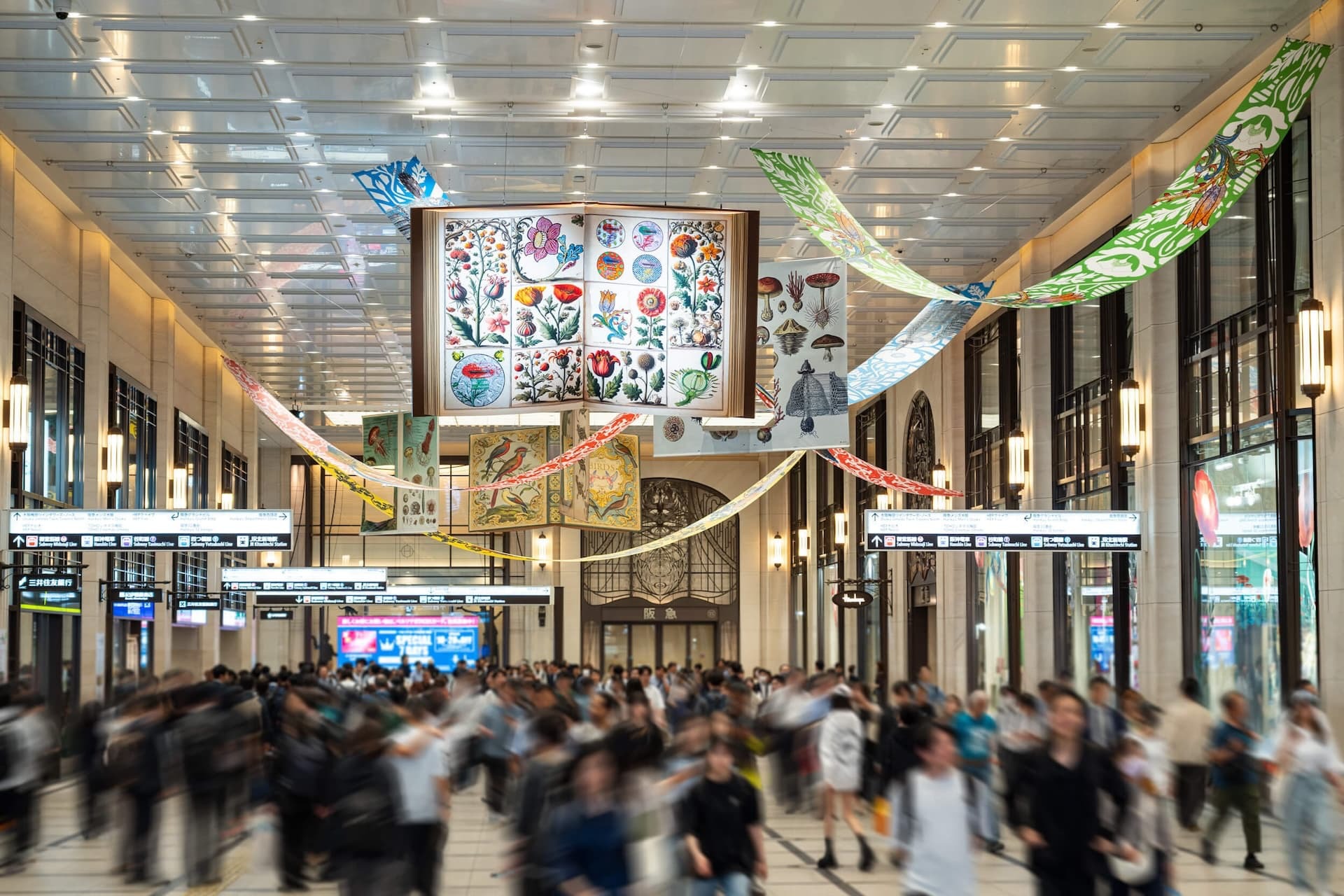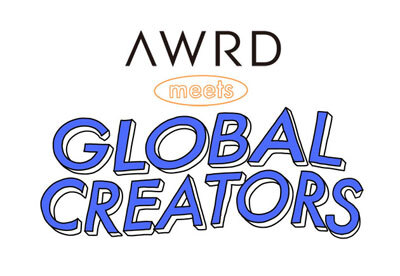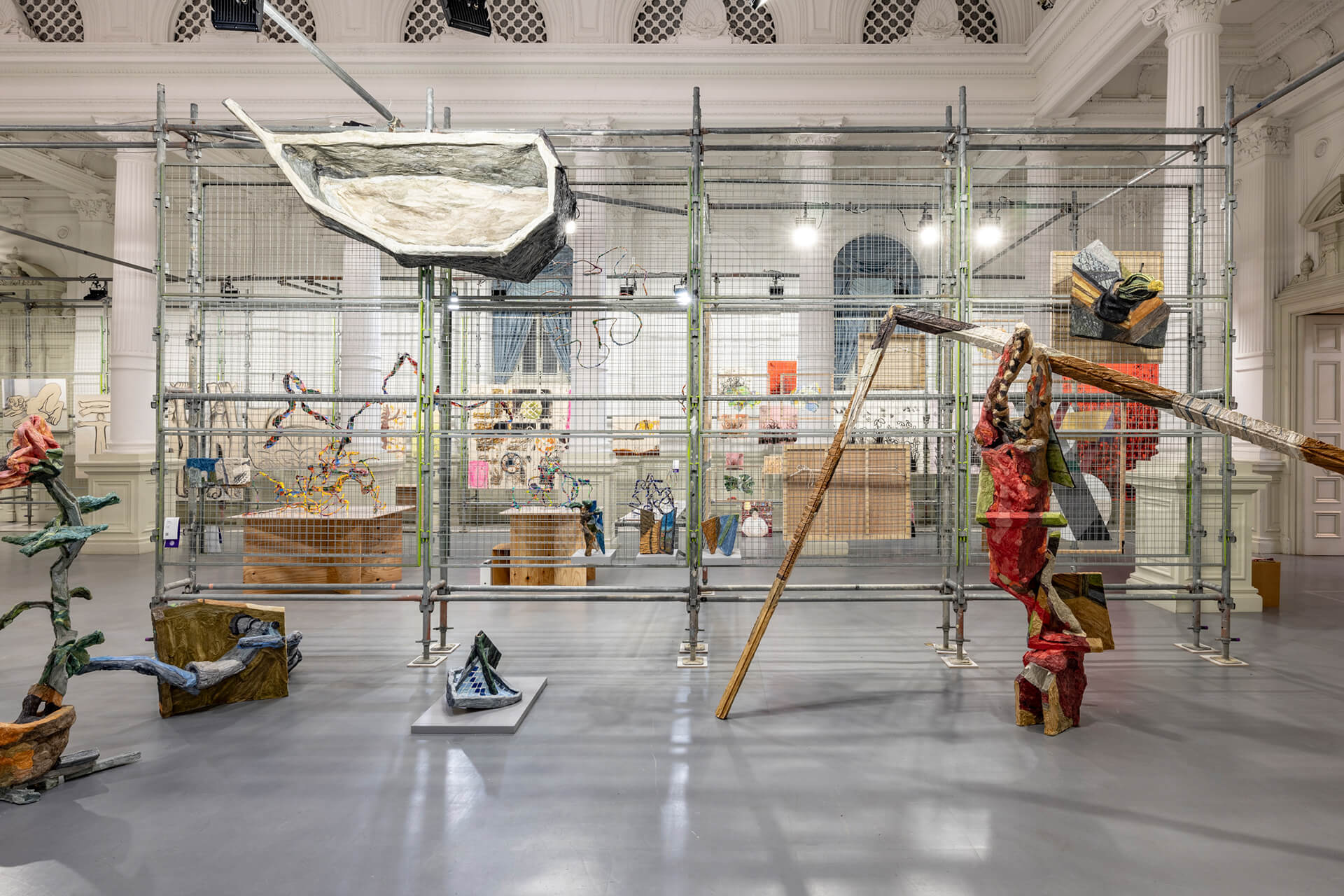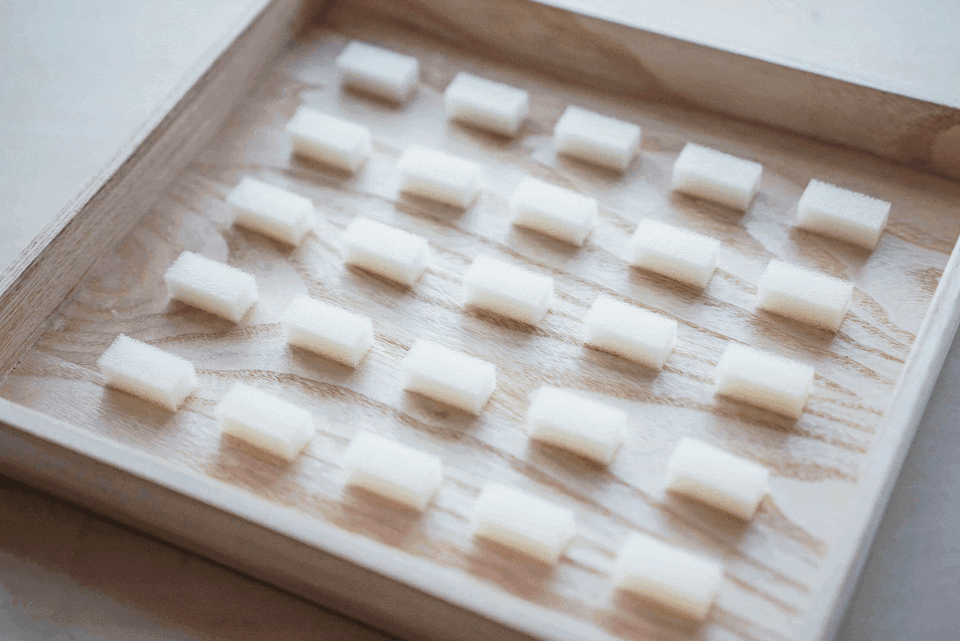A new series from AWRD, the platform that connects creators and projects: “AWRD meets GLOBAL CREATORS” (#AMGC).
With the theme of “New Sensibilities,” the series shines a spotlight on up-and-coming designers, artists, and other creators from around the world, delving into their creative processes and the unique cultures that shape them.
In its 9th installment, the featured artist is contemporary artist Sayaka Miyata. With a background in textile arts, She explores new forms of beauty through works that range from flat artworks to large-scale installations—such as those created by intentionally introducing “bugs” into sewing machines, or by composing pieces entirely from thread without any support structures.
Her large-scale art installation “The New Museum of Wonder: The Gene of Curiosity” is currently garnering attention as a highlight of Osaka Art & Design 2025, running from May 8 (Wed) to June 23 (Mon), 2025.
In this interview, we speak with her about her unique perspective—overlaying the dynamism of life and evolution onto familiar materials like fabric and thread—along with the inspirations behind her work and her vision for the future.
[Header Image]
The New Museum of Wonder: The Gene of Curiosity
Photo: MATSUMI Takuya,
Courtesy: Code-a-Machine,
Location: Hankyu Department Store Umeda Main Store Concourse Window / Osaka Umeda Twin Towers North 1F Concourse
Collaborator:Midori Hirota (a sign maker&graphic designer)
Concept&Direction:Code-a-Machine (Kodama Kanazawa+Shinichiro Masui)
— You create a unique form of expression by intentionally causing “bugs” in the sewing machine—essentially embracing failure as a means to generate new values. What kind of experiences led you to develop this approach?
It all began when I majored in dyeing and weaving at university, which led me to start creating hand-embroidered works. Later, when I entered graduate school, I wanted to further explore the possibilities of embroidery and decided to incorporate sewing machines into my practice.
Modern sewing machines are incredibly smart—they maintain a consistent quality from start to finish, and the result is always clean and precise, no matter who operates them. But that also means there's no individuality in the output. It made me question whether using such a uniform tool had any meaning for my artistic process. So I thought—what if I break this uniformity of stitches?
Originally, I used to sew freely by hand, following my instincts, and I wondered if I could bring that same spontaneity into machine embroidery. I started experimenting with introducing “bugs” into the programmed embroidery data—tricking the intelligent sewing machine. As a result, the needle would suddenly “warp” across the fabric, and its irregular movements would form layered thread trajectories. This became the basis for my WARP series.
Later, by introducing different types of bugs, I developed other techniques—such as eliminating the fabric base entirely and composing pieces using only threads. This led to the Knots series. Through these various original methods, I continue to explore the theme that even errors—bugs, which are normally seen as failures—can give rise to beautiful and compelling details that hold their own unique value.
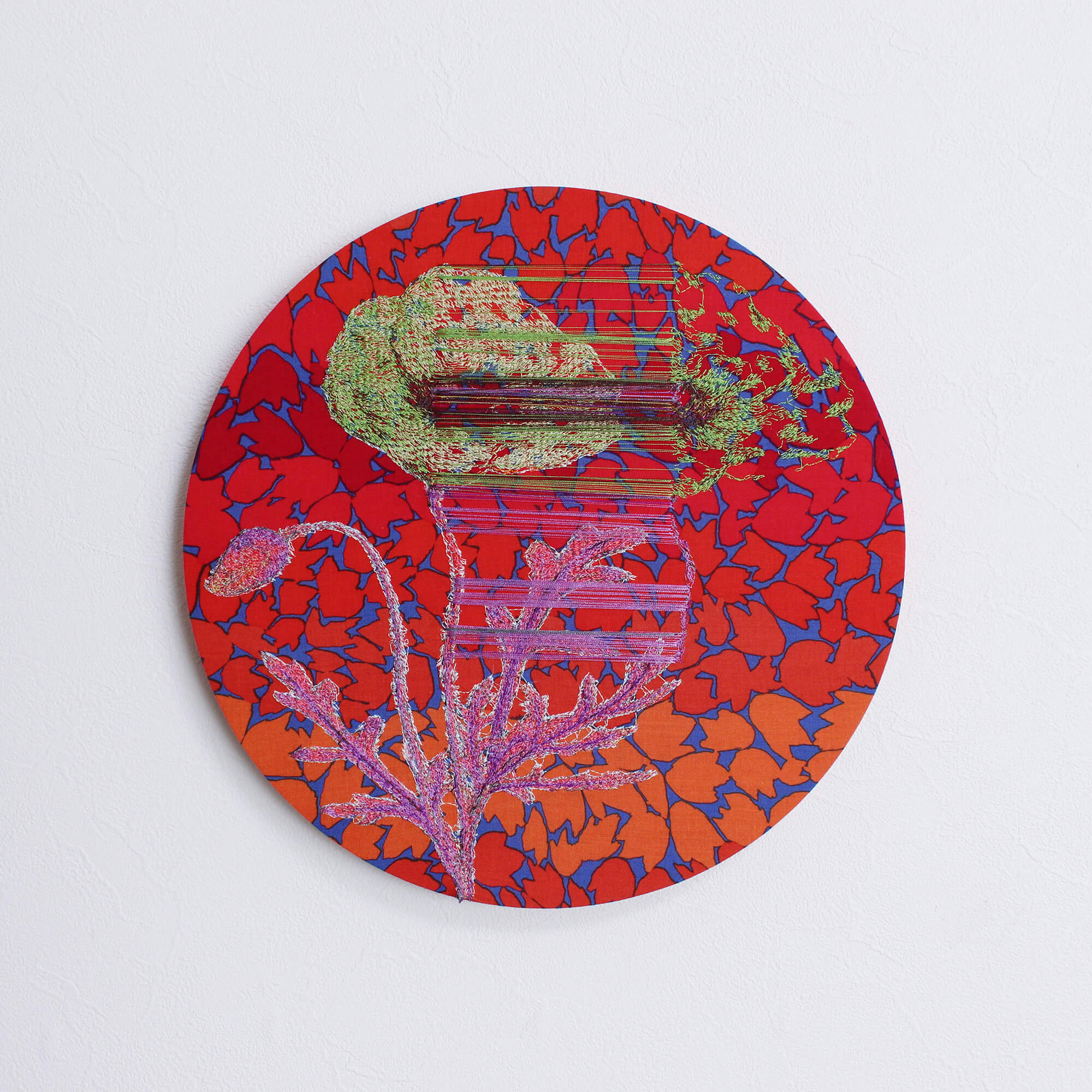
—Your large-scale art installation “The New Museum of Wonder: The Gene of Curiosity” is currently on view at Osaka Art & Design 2025. What kind of thoughts or intentions did you put into this work?
Since the installation is being presented in a public space at the gateway to Umeda, Osaka—a place said to be traversed by around 400,000 people each day—I was especially mindful of creating a piece that could resonate with a wide audience, regardless of age or background.
When I was a child, I spent a lot of time surrounded by illustrated books in our home library, including the natural history volumes by German biologist and philosopher Ernst Haeckel, as well as picture books of various flora and fauna. My grandmother, who loved patchwork, also had a collection of textiles from around the world. The motifs and colors depicted on those fabrics were like encyclopedias to me—windows into cultures from distant lands or times that existed before I was even born. Just looking at them would fill me with excitement.
I believe everyone has experienced the joy of discovering something unknown, or the thrill of imagining the unseen. With this installation, I wanted to evoke that sense of wonder—like leafing through a natural history book that stirs a deep, childlike curiosity about the unknown.

—How did your mindset shift when presenting your work in a public urban space, compared to previous exhibitions held in galleries or art institutions?
Having all seven large show windows filled with my work was an enormous undertaking—it was almost like presenting the entirety of my artistic journey at once. On top of that, the installation in the concourse posed a new challenge for me, as someone who typically works with the fine and intricate technique of embroidery. I had to ask myself: what kind of display could I create in such a dynamic public space?
In the end, I chose to exhibit embroidery works in the show windows, positioned at eye level so that viewers could get close and appreciate the delicate details. For the concourse area, I shifted my approach—installing object-like elements and decorative pieces that reflect the motifs and worlds behind my embroidery works. This allowed even passersby to momentarily immerse themselves in that universe, simply by walking through the space.
Rather than focusing solely on the embroidery itself, I concentrated on bringing the world and atmosphere of my embroidery practice to life in a tangible, spatial form. In doing so, I believe the installation also deepens the audience's emotional connection to the embroidery pieces I usually create.
This exhibition has become a valuable experience for me—one that expanded my own sense of possibility as an artist.

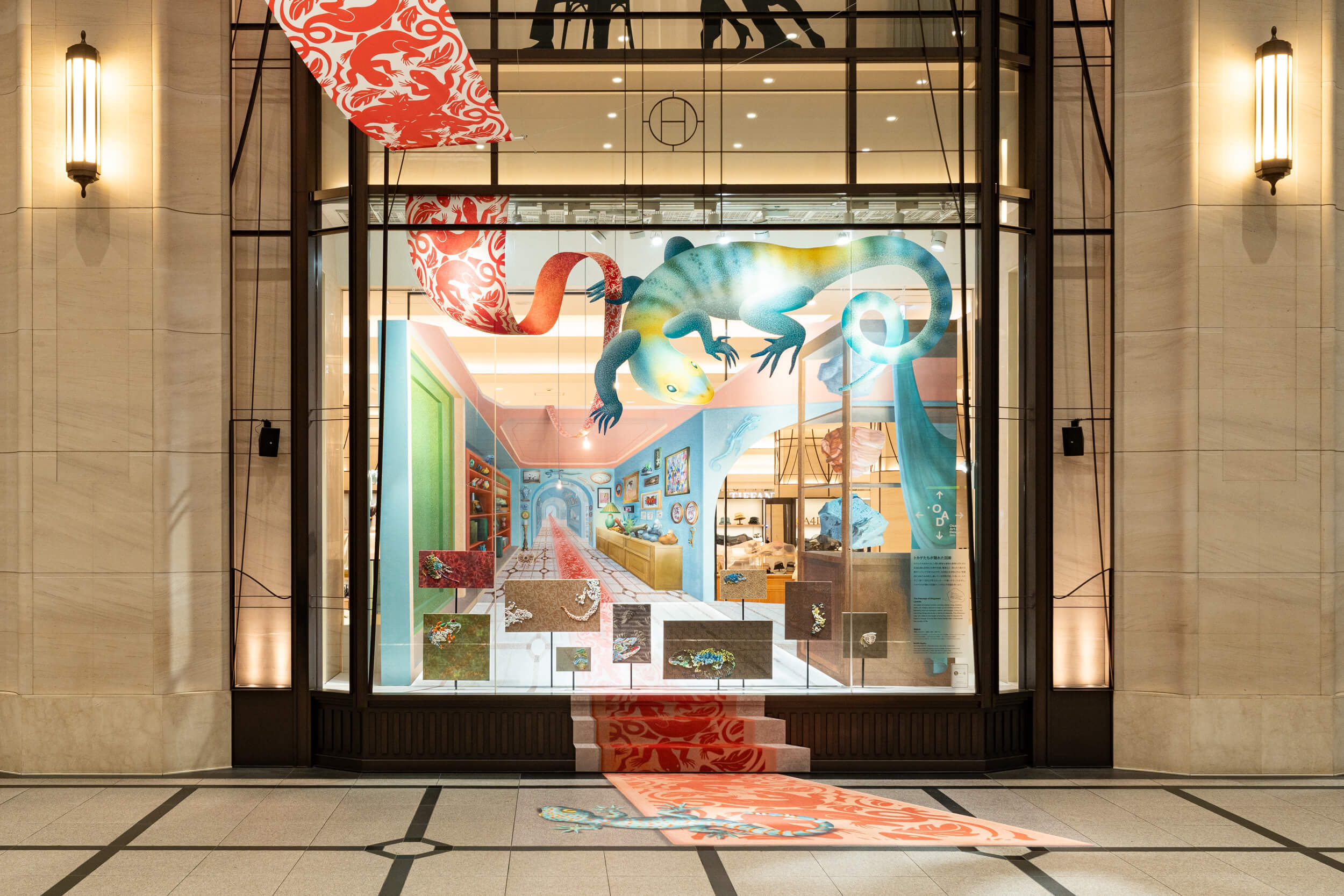
—Your work seems to resonate with the forms and evolutionary processes of living organisms. How do you perceive or interpret the idea of “lifelikeness” in your art?
Since I originally majored in dyeing and weaving at university, it was natural for me to use plants and animals as motifs in my textile designs. When I transitioned into embroidery techniques, the way the stitched threads branched out reminded me of cellular growth.
Now, by introducing bugs into machine embroidery to create new details, I find it fascinating how this process resembles genetic modification or biological mutations.
I also see the very act of stitching thread as a way to visualize the time I spend on embroidery—the thickness of the thread layers reflects this. In that sense, my work makes the fact that I am alive visible and tangible.

—As you work based in Kyoto, could you share some recommended spots where you find inspiration? These can be places within Kyoto or anywhere else you enjoy visiting.
It’s the Kamo River (upper reaches of the Kamo River).
I was born and raised very close to the Kamo River, and even now, I love walking my dog along its banks, enjoying cherry blossom viewing with friends, or simply spending quiet moments alone there. It’s a place where I often encounter motifs and themes for my work, as well as a source of inspiration and a peaceful break during my creative process.
I enjoy watching the seasonal plants, catching fish and small shrimp in the river, and sometimes spotting skinks or frogs. Honestly, I might say I can’t imagine leaving here because of how deeply connected I am to the Kamo River.
—Please share any upcoming activities or exhibition information you’d like us to know about.
I will be holding solo exhibitions in Osaka and Yokohama in the near future, where I will also unveil new works. I would be delighted if you could come and visit.
In addition, I have plans to participate in art festivals and exhibitions both in Japan and overseas, so please look forward to those!
・On view now through June 22: “Kansai Art Annual 2025 CO” (Shinsaibashi PARCO, Osaka)
・On view now through June 23: “The New Museum of Wonder: The Gene of Curiosity” (Hankyu Department Store Umeda Main Store Concourse Window / Osaka Umeda Twin Towers North 1F Concourse)
・July 5–26: Solo Exhibition “The Afterheat of the MacGuffin” (YOD Gallery, Osaka)
・August 20–25: Solo Exhibition “The Reverberation of Pareidolia” (Yokohama Takashimaya Art Gallery)
Sayaka Miyata
Born in Kyoto, Japan.
2012 MFA, Textile Field, Kyoto University of Art and Design.
Majoring in Textile Arts at university inspired me to begin creating artworks using my own techniques in hand and machine embroidery.
In the WARP series, layers of thread appear as intentional glitches, created by manipulating the sewing machine—an everyday tool—to generate unexpected textures and depth.
In the KNOTS series, I construct embroidery without using fabric as a base, building each piece only with thread.
These various embroidery techniques allow me to explore life forms, the origins of things, and states of evolution.
I am deeply interested in how errors or failures—often seen as negative—can bring new values and ways of thinking into the world.
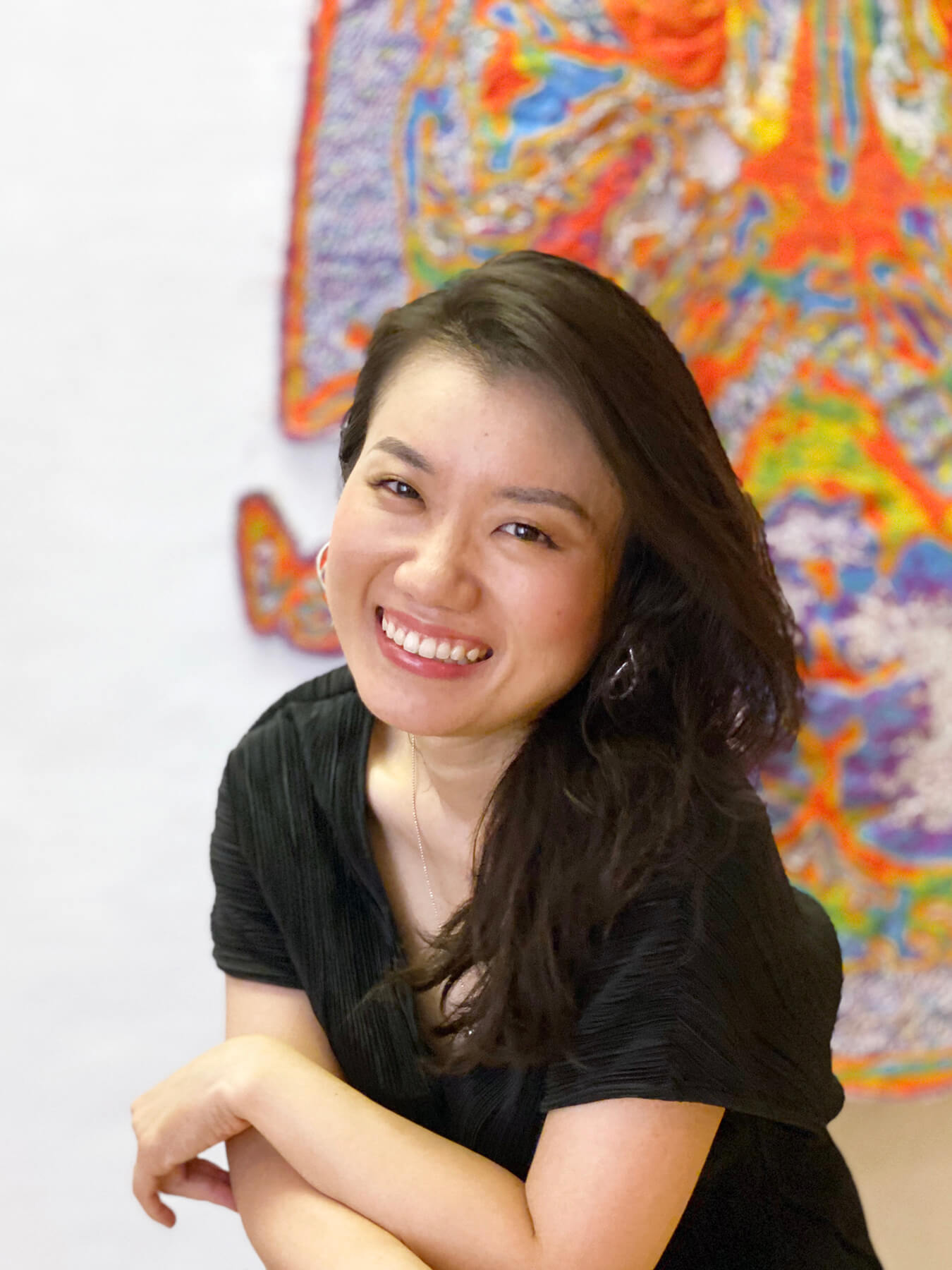
Links
HP:https://www.sayakamiyata.com/
Instagram:https://www.instagram.com/sayakamiyata_art/
Facebook :https://www.facebook.com/sayakamiyata.art
編集:AWRD編集部
